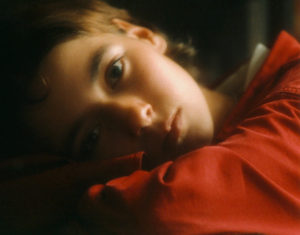Suppose that you manage a website devoted to dogs, discussing everything about their life, health and happiness, giving advice on how to groom them, advertising dog events and contests, all with beautiful photographs of nice dogs on each page. Then someone comes and says that you hyper-sexualize dogs, that your site is a zoophile’s paradise. You will rightfully reply that the perversion lies only in that person’s mind, as your interest in dogs is friendly but not sexual, and you just want to share it with others.
Suppose now that you have at home a dog whom you consider as a companion, whom you like to hug and cuddle, and that you even allow him to sleep on your bed whenever he wants. Then that person comes again to say that you are a pervert, and hints that you must have bestiality porn on you computer. You will rightfully reject that person as a twisted mind and a nuisance.
These examples about love of dogs will seem absurd. However, similar accusations have been raised when it is not dogs, but human beings, in particular children. Any form of general interest, tenderness and affection towards one group of human beings will be interpreted as sexual, and sometimes in a gross pornographic way. This might give an explanation to the frequent habit of having pets, as one can freely indulge in loving them without risking an accusation of inappropriate erotic motives. Another reason could be that animals are not complicated as human beings, they unconditionally accept your love without questioning it.
In my article Components of Love, I discussed the various forms of love and affection, for which ancient Greece had four words. The first example above, that of a general interest in some subject or activity, and of friendships built with other people sharing it, belongs to what the Greeks called Philia. The second one shows natural affection, as it can exist between members of a family, the Greeks called it Storge. Today, few people know these two words and can distinguish such forms of love from Eros, the ancient Greek word for sexual love, or love driven by physical beauty.
The dominant culture of our epoch fetishizes sex, so any manifestation of tenderness tends to be interpreted as erotic, unless it happens between close family relatives and is not too exuberant. Two male friends will not kiss each other’s cheek, as do female friends. Adults will not dare to hold in their arm a crying child who is not their own.
This poverty in the conception of love reflects itself in the poverty and inconsistency of scientific terminology, in particular in its use of ancient Greek roots for scientific designations. To my knowledge, the root ‘storge’ is never used, the root ‘eros’ only rarely, for instance the Greek word erastes (which means sexual lover) appears in the old-fashioned word paederasty, by which one means male homosexuality (while etymologically it should mean child-love or boy-love).
On the other hand the root ‘philia’ appears with many different meanings. First it is used in the legitimate sense of interest for an activity, as with the words bibliophile and cinephile designating people who have a passion for books and films respectively. Another correct use is to denote general friendship, as for a judeophile who appreciates Jews and their culture, thus defends them against haters. Now it also designates a purely physical phenomenon, in particular an attraction between molecules, as one calls hydrophile cotton one that absorbs water. Then it is used to denote the type of environment in which a life form thrives, for instance an organism can be acidophile, alkalophile or halophile according to whether it lives best in an acid, alkaline, or highly salted environment.
Finally the root ‘philia’ is used in sexology to designate various special sexual interests, under the generic category of paraphilia. While one says heterosexuality and homosexuality for sexual attraction to same age people of the opposite or the same sex, other attractions are called ‘philias’ rather than sexualities. One of the first to use such a distorted terminology was the 19th century Austro–German psychiatrist Richard von Krafft-Ebing, who considered any form of non-reproductive sexuality as a perversion; his magnum opus Psychopathia Sexualis catalogued all such deviations, from Platonic love to sadism and masochism, but was devoted to a large part to homosexuality, which he called ‘sexual inversion’. He invented the terms gerontophilia and paedophilia for the sexual orientations towards elderly people and children respectively. For the latter, he wrote paedophilia erotica; indeed it is a form of Eros, not a Philia in the original sense, and the correct word should have been paederasty, but the latter was already highjacked to mean male homosexuality. However later sexologists omitted the qualification ‘erotica’ and retained only ‘philia.’
Paraphilias mix higgledy-piggledy erotic attractions to people of various ages, such as nepiophilia, paedophilia, hebephilia and gerontophilia, as well as strange forms of fethishism, such as eproctophilia, the sexual arousal by flatulence. This shows how far the confusion between love and sex fetishism has deepened in contemporary society. In fact, many psychiatrists or social workers will deny the existence of love in paraphilias, as it seems that only official sexualities are entitled to be considered as forms of love.
Such a confused and deceptive terminology is then used to describe feelings and passions of celebrities. For example many have called Lewis Carroll a paedophile on the grounds of his many friendships with little girls, or the fact that among the many photographs he made of them, some were nudes. Now scholars can explain that his friendships with children did not exclude boys, that he never expressed any sexual feeling with prepubertal girls, and that in Victorian and Edwardian times, child nudity was considered as innocent, it was even used to illustrate greetings cards. But then they will say “there must be something” (presumably hiden), and some will explain the ethymology of paedophilia as “friendship for children,” again confusing two types of love. Now other scholars will show that Carroll sometimes expressed an erotic attraction towards teenage girls or young women (showing him thus as an ephebophile rather than a paedophile), that his friendship with girls took different forms according to their ages. But this will not impress those cherishing that legend. That a man can love girls and women of various ages, with a different form of love for each age, seems beyond their comprehension. They have no words for that.
The image at the top is Foggy night in Southern Michigan, from imgday.com.
Previously published on Agapeta, 2016/04/02.

